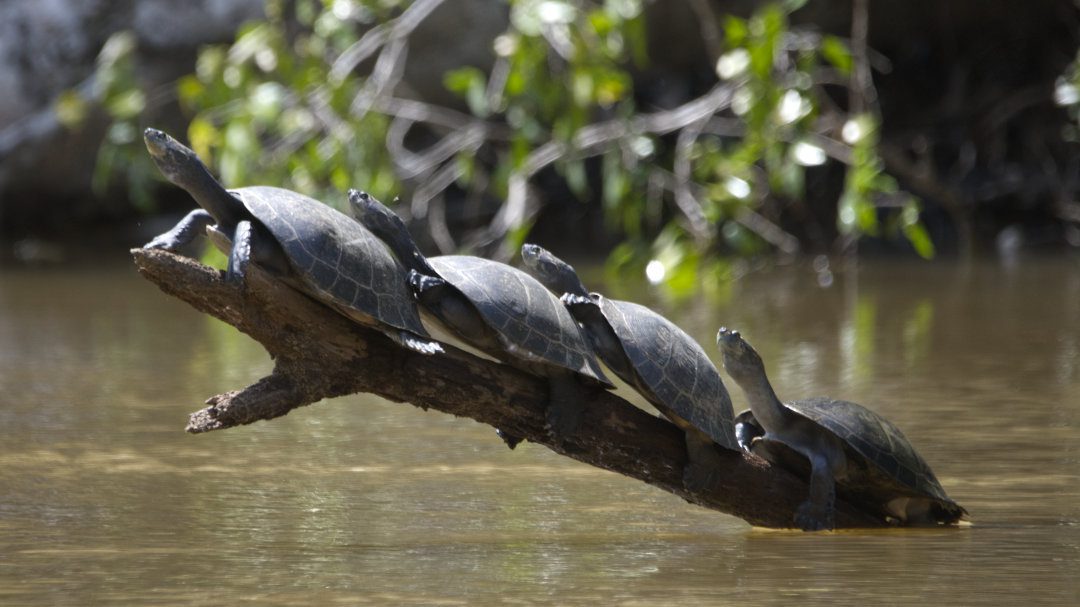Into the Amazon With Cuyabeno’s Indigenous Communities
This immersive five-day experience offers a rare opportunity to connect on three levels—within yourself, with local Indigenous communities, and with the awe-inspiring Amazon rainforest.
Designed by Edgar Noteno of Kichwa Lodge, this journey fosters mutual respect and deep understanding of the land and its people. Traveling by motor canoe along the Aguarico River, you’ll visit the Secoya, Shuar, Kichwa, Cofán, and Siona communities, where elders and knowledge-keepers welcome you into their world. Through their stories, traditions, and teachings, you’ll gain insight into ancestral practices—sustainable living, the healing power of medicinal plants, and the profound relationship between humans and nature.
Each day offers authentic, hands-on experiences that go beyond observation. Share in daily life, participate in time-honored rituals, and witness the resilience of cultures that have thrived for centuries in harmony with the rainforest. The journey culminates in a powerful purification ceremony with the Siona, offering a moment of reflection and spiritual renewal.
This is an invitation to engage deeply—with people, with place, and with purpose.
Where: Cuyabeno Wildlife Reserve
When: Year Round
Who: Private groups of 4-8 guests
$800 per person, double occupancy
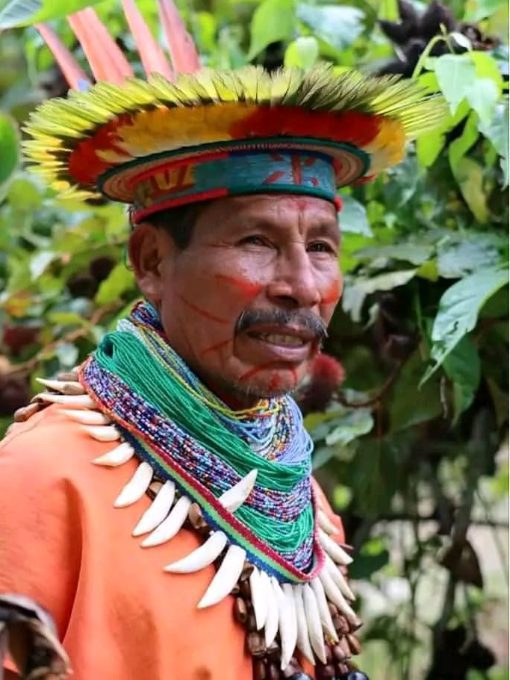

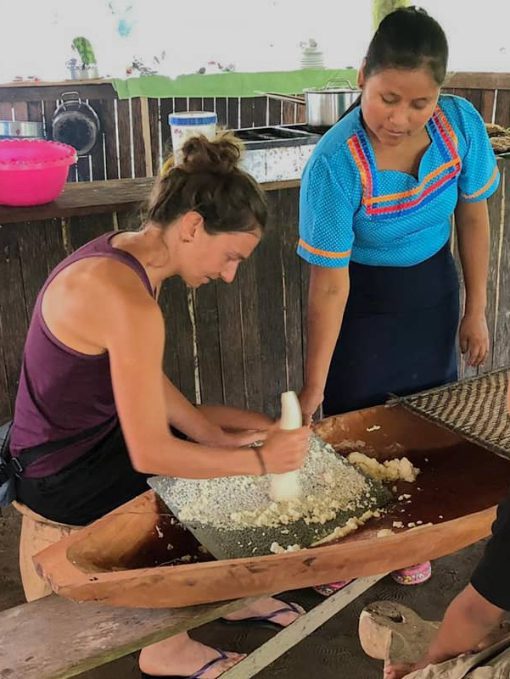
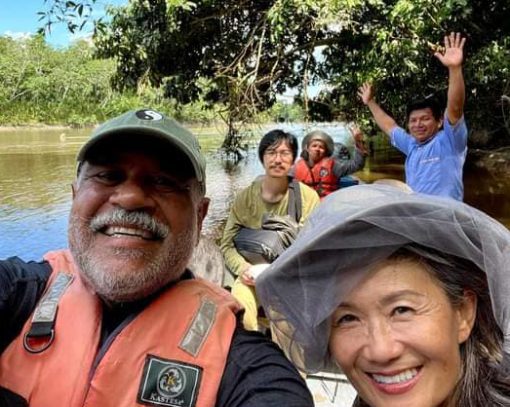
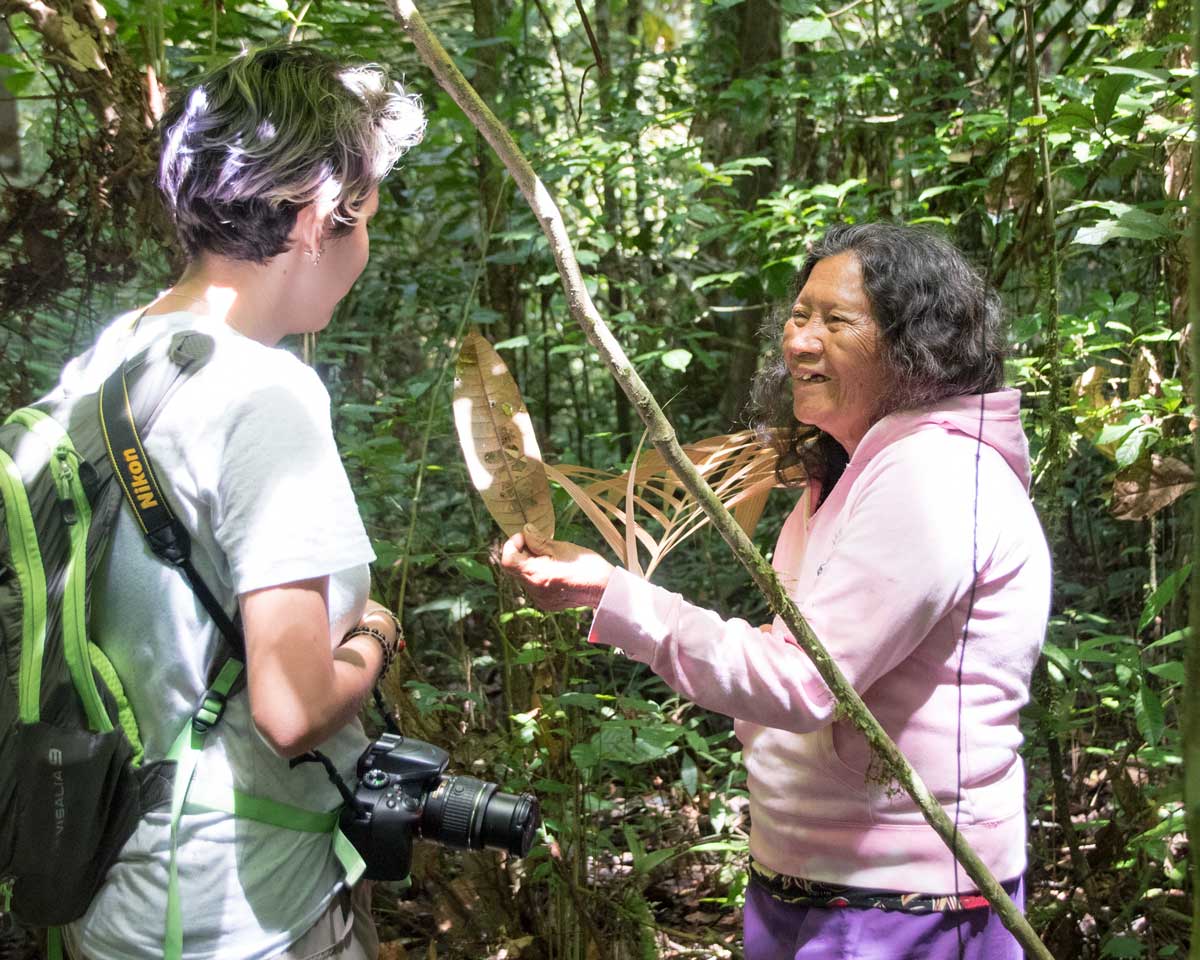
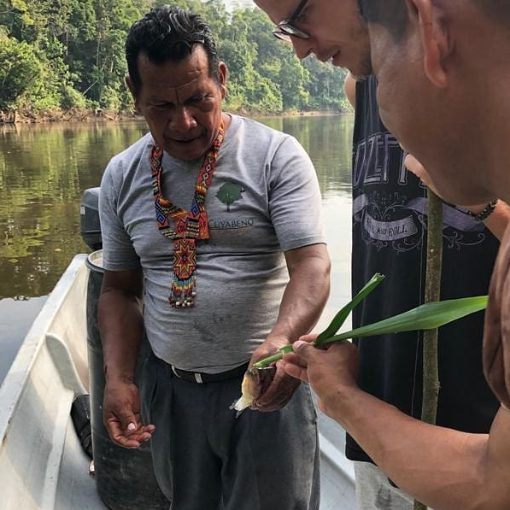
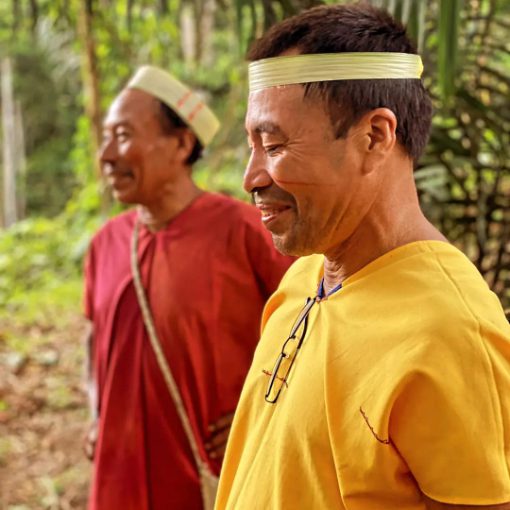
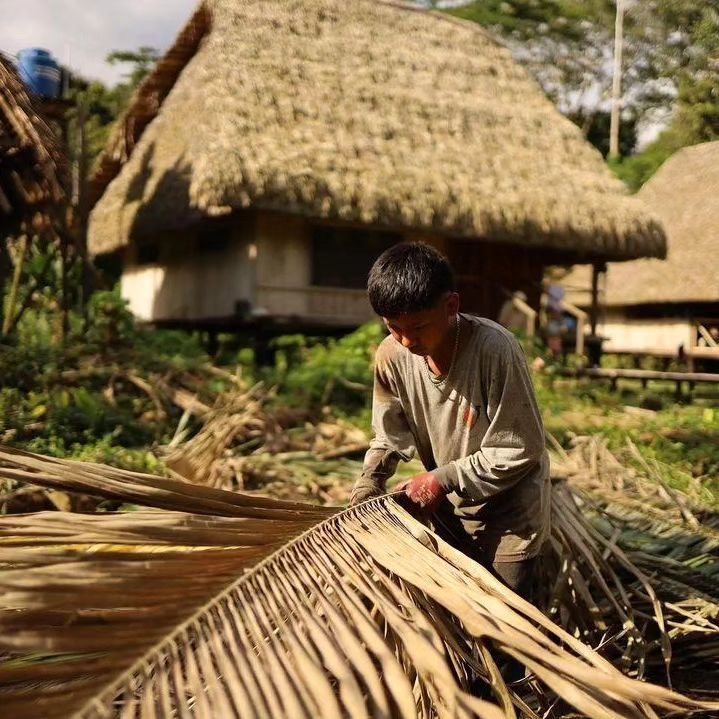

About Cuyabeno Kichwa Lodge
Cuyabeno Kichwa Lodge is an Indigenous-owned ecotourism lodge located along the Aguarico River in Ecuador’s Cuyabeno Wildlife Reserve. Founded in 2019, the lodge is dedicated to sustainable tourism, offering visitors an authentic Amazonian experience while actively supporting conservation, cultural preservation, and local education initiatives.
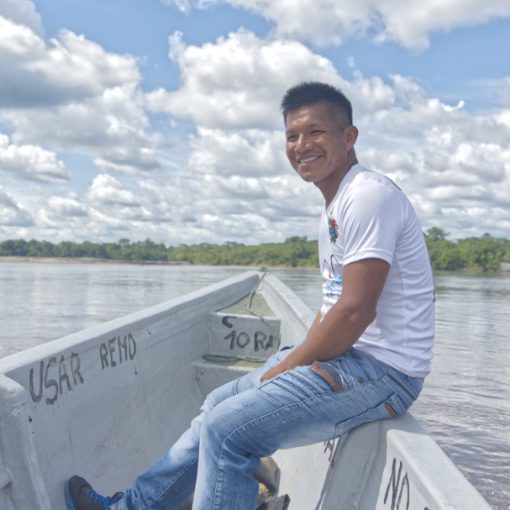
Edgar Noteno, the lodge’s general manager, is a native of the Kichwa community who grew up in the Amazon Basin. His lifelong passion for nature and cultural exchange led him from working as a young kitchen assistant to becoming a bilingual guide and, ultimately, a leader in Indigenous ecotourism. Under his guidance, Cuyabeno Kichwa Lodge provides immersive experiences that connect travelers with the rainforest and its people in a meaningful, responsible way.
Ask Edgar A Question
At Not Your Average American, LLC, we serve as a travel broker, connecting you with trusted tourism providers in South America. While we don’t directly offer tours, we partner with local experts who handle all aspects of your travel. We earn a small commission on each sale, with bookings and payments processed through our partner via the WeTravel platform. If any issues arise, we are happy to assist with communication to ensure a smooth experience.
Itinerary: Into the Amazon With Cuyabeno’s Indigenous Communities
Journey Into the Cuyabeno Wildlife Reserve
Our adventure begins at 9:30 a.m. in Coca, where we set out for Tierras Orientales before boarding a canoe to navigate the winding waters of the Aguarico River. As the rainforest embraces us, we’ll leave behind the modern world and step into a landscape shaped by nature and tradition.
Our first connection is with the Secoya people, guardians of ancestral wisdom. At Secoya Lodge, a community-led initiative, we’ll be welcomed into their world—sharing meals, learning about their language and customs, and discovering the healing power of their traditional medicine. This evening, we settle in for the night, not just as visitors, but as participants in a way of life that has endured for generations.
Overnight stay with the Secoya.
Navigating Cultures Along the Aguarico
As the river carries us deeper into the Cuyabeno Wildlife Reserve, we’ll bid farewell to the Secoya and continue our journey downstream, where the wide river gives testament to ancient Indigenous connections to the water. Our path leads us to the Shuar community, renowned for their rich cultural heritage and resilient spirit. Here, we’ll step into their world, guided through a museum that holds their living memory—art, artifacts, and traditions that speak of warriors, healers, and deep connections to the land.
Back on the river, the journey offers new vistas of water, forest, and sky until we arrive at Kichwa Lodge, nestled along the riverbank. This will be our home for the next part of the adventure, a place to pause, reflect, and prepare for the days ahead. As the sun dips low, we’ll sway in hammocks, surrounded by the sounds of the forest, while our guide shares the wonders that await us.
Overnight stay at Kichwa Lodge
STORIES OF RESILIENCE WITH THE COFÁN
At first light, we’ll set out on a new path, leaving our luggage behind as we venture deeper into the Cuyabeno Wildlife Reserve to meet the Cofán community. Known for their profound connection to the land, the Cofán will welcome us into their world, sharing time-honored customs and traditions passed down through generations. Their stories are woven with a deep commitment to conservation, highlighted by an inspiring tortoise rescue project—a testament to their role as stewards of both culture and biodiversity.
By afternoon, we’ll return to the peaceful embrace of Kichwa Lodge, where the sounds of the forest invite us to relax, reflect, and carry forward the lessons of the day.
Overnight at Kichwa Lodge.
A SACRED FAREWELL IN THE HEART OF THE AMAZON
With our bags packed and hearts full, we’ll bid farewell to Kichwa Lodge and set out on a river journey toward the Siona village, navigating waters that mirror the endless sky. After a long yet mesmerizing boat ride, we’ll arrive at our glamping site, a breathtaking retreat nestled deep within the Amazon—where the sounds of nature become both lullaby and wake-up call.
As night descends, we’ll take part in a spiritual cleansing ritual, an ancient and sacred ceremony led by the Siona, guardians of tradition and wisdom. This powerful act of purification transcends the physical, inviting us to release, reflect, and connect with the profound essence of the Amazon. It’s more than a ritual—it’s an opportunity to open your hearts to a life-changing experience.
Overnight Glamping with the Siona
RETURNING WITH THE AMAZON IN OUR HEARTS
As dawn breaks over the rainforest, we’ll begin our journey back to Coca, retracing the winding river that has been our path through this rich and vibrant world. The Aguarico, should now feel familiar—its currents carrying not just our canoe, but the stories, lessons, and connections we’ve gathered along the way.
Upon arrival in Coca, we can deliver you to the hotel of your choice, allowing time to rest and reflect on an adventure that’s more than a trip—it’s a journey that stays with you, long after the rainforest fades from view.
Transfer to hotel or transportation service in Coca.
Overnight not included.
Included:
- English-language Guide
- Lodging for 4 nights
- All meals
- Unlimited refills for your water bottle
- Entrance Fees
- Transportation, including transfers to and from the Francisco Orellana airport or your hotel in Coca.
Not Included:
- Tips for staff and guides
- Personal expenses like laundry
- Transportation to Coca
- Flights, international or national
- Overnight accommodations in Coca
- Travel Insurance
- Fees for bank transfers or credit cards
More Information About Into the Amazon With Cuyabeno’s Indigenous Communities
Booking Your Flights
.If you have limited time in Ecuador, you may want to book a flight from Quito, Cuenca, or Guayaquil to Francisco de Orellana Airport in Coca. This removes some of the worry of road travel which can be complicated by delays, especially during the rainy season in the Andes when mudslides often close roads.
For this itinerary, Edgar will pick you up at the airport for morning arrivals. If you arrive in the late afternoon, we recommend booking a hotel for the night. Also, on the final day of this itinerary, you will arrive in the afternoon to Coca, to late to return by air. Therefore, we recommend booking a hotel for the night and your flight for the following morning. If you are game to stay a day or two more, visit Coca’s delightful museum, try some excellent local food, and maybe visit the Limoncocha Biological Reserve, a couple of hours away.
Flights to Francisco de Orellana are managed by LATAM. You can make your reservations using Booking.com or Expedia. You might also use the map below to book your lodging.
Geography
The Cuyabeno Wildlife Reserve, located in the northeastern corner of Ecuador within the Amazon Basin, covers over 6,000 square kilometers of diverse ecosystems. Its geography is shaped by a complex network of blackwater rivers, lagoons, flood forests, and terre firme (non-flooded) tropical rainforest, with the Aguarico River serving as a major artery that intersects with the Cuyabeno River, creating a dynamic landscape of waterways and floodplains.
Climate
The Cuyabeno Wildlife Reserve is a humid, tropical rainforest with consistently high temperatures and abundant rainfall throughout the year. Average temperatures range between 25°C to 30°C (77°F to 86°F), with humidity levels often exceeding 80%, creating a warm, lush environment that supports the region’s rich biodiversity. Traditionally, Cuyabeno experiences two main seasons: the rainy season (typically from March to July), when rivers and lagoons swell, flooding large areas of the forest, and the drier season (from August to February), which brings slightly less rainfall but remains humid with frequent showers.
However, climate change is significantly impacting this delicate balance. In recent years, the region has experienced unprecedented droughts, altering river levels, shrinking lagoons, and disrupting both wildlife habitats and the traditional ways of life for Indigenous communities. Come prepared for rain but don’t be surprised by dry conditions.
Pace
This journey through the Cuyabeno Wildlife Reserve offers an immersive exploration of the Amazon’s diverse landscapes, with a pace that balances adventure and reflection. A significant portion of the trip will be spent traveling by motorized canoe, navigating the winding rivers and blackwater lagoons that define the region. These river journeys provide incredible opportunities to observe wildlife and experience the ever-changing scenery of the rainforest.
While much of the travel is water-based, there will also be guided walks and hikes on land, allowing for closer encounters with the Amazon’s rich flora and fauna, as well as visits to Indigenous communities. Expect warm, humid conditions both on the water and during land excursions.
Come prepared for the heat with lightweight, breathable clothing, sun protection, and plenty of water to stay hydrated. The combination of river travel and on-foot exploration ensures a dynamic experience, offering both the serenity of drifting through the forest and the thrill of walking under its towering canopy.
When to go
The Cuyabeno Wildlife Reserve can be visited year-round, as its tropical climate maintains warm temperatures and high humidity throughout the year. However, the experience can vary depending on the season, shaped by the region’s distinct rainy and drier periods.
Rainy Season (March to July): This period brings frequent, heavy rainfall, causing rivers and lagoons to swell and flood large areas of the forest. Water levels are at their highest, making it easier to navigate deeper into the reserve by canoe and access remote areas. Wildlife viewing can be exceptional, as animals often gather near the water’s edge, and birdwatching is particularly rewarding with many migratory species present.
Drier Season (August to February): While still humid with occasional showers, this season sees lower water levels, revealing more trails for hiking and increasing chances to spot terrestrial wildlife. The exposed riverbanks attract animals like caimans, turtles, and various bird species, making it a great time for land-based exploration alongside river travel.
Choosing the best time to visit depends on your interests:
- For richer canoe experiences and birdwatching, the rainy season is ideal.
- For more hiking opportunities and diverse wildlife sightings on land, the drier season offers greater accessibility.
Regardless of when you go, the Cuyabeno’s promises an unforgettable adventure. Be prepared for heat, humidity, and occasional rain at any time of year.
Accommodations
During this journey through the Cuyabeno Wildlife Reserve, accommodations are designed to provide comfort while keeping you connected to the natural environment and local cultures. You’ll stay in a variety of unique settings that reflect the spirit of the Amazon:
Community Lodges: In the heart of Indigenous territories, you’ll be welcomed into community-led lodges, such as those operated by the Secoya and Kichwa. These lodges offer simple yet comfortable amenities, with rustic cabins or rooms that blend seamlessly with the surrounding rainforest. Staying here provides a meaningful connection to local traditions, with opportunities to share meals, stories, and cultural experiences with community members.
Glamping Site: For a truly immersive experience, you’ll spend a night at a spectacular glamping site, balancing adventure and comfort. Waking to the sound of dawn chorus is an unforgettable part of the journey.
While amenities are basic compared to urban hotels, all accommodations are designed to be sustainable and eco-friendly, minimizing environmental impact while maximizing your connection to the Amazon. Expect limited electricity, especially at night, and be prepared for a truly off-the-grid experience that prioritizes nature and cultural immersion.
Important Travel Note:
For smooth travel logistics, please book your own overnight accommodations in Coca in the following cases:
- The night before the tour if you’re arriving on an afternoon flight, as the tour starts the next morning.
- The final night (Day 5) if you plan to fly back to Quito, as flights from Coca to Quito only depart in the morning.
Staying overnight in Coca ensures a relaxed start and finish to your Amazon adventure, allowing you to transition comfortably between the city and the rainforest.
Mission and Purpose
The mission of Kichwa Lodge is to serve as a bridge between the rich cultural heritage of the Kichwa people and the natural wonders of the Cuyabeno Wildlife Reserve, fostering deep connections between visitors and the Amazon rainforest. Rooted in the values of sustainability, cultural preservation, and environmental stewardship, Kichwa Lodge is more than just a place to stay—it is a community-led initiative designed to empower Indigenous people while protecting the ecosystems they have safeguarded for generations.
By staying at Kichwa Lodge, you’re not just a guest—you’re part of a shared mission to honor the Amazon’s cultural and ecological wealth while contributing to the long-term well-being of the people and the land that make this place extraordinary.
Health and Safety
Health and safety are top priorities for this journey into the remote and biodiverse Cuyabeno Wildlife Reserve. Here’s an overview of key considerations to help you prepare for a safe and enjoyable adventure:
Insect Protection
The Amazon’s humid environment is home to many insects, including mosquitoes that can carry diseases like dengue fever and, though rare, malaria. We have tips to protect yourself in this article: 5 Essential Tips to Avoid Mosquito Bites in the Amazon.
Vaccinations and Health Precautions
While malaria is not common in the Cuyabeno region, we recommend consulting your healthcare provider for personalized advice. You may also review guidance from resources like the CDC’s travel health website.
Emergency Preparedness
The Cuyabeno is a remote area with no nearby hospitals or health clinics. In case of an emergency, the nearest medical facilities are in Coca, which may require several hours of travel by boat and vehicle.
We highly recommend purchasing travel health insurance that includes emergency medical evacuation coverage, especially for travelers with pre-existing health conditions.
Heat and Hydration
The Amazon is hot and humid year-round. We recommend:
- Stay well-hydrated to avoid dehydration.
- Protect yourself from the sun with hats, sunglasses, sunscreen, and lightweight, breathable clothing.
Medications and First Aid
Bring a personal medical kit that includes:
- Any prescription medications you require.
- Anti-diarrheal medications, basic pain relievers, and personal hygiene items.
- Electrolyte tablets or rehydration salts can be helpful in hot conditions.
By following these health and safety guidelines, you’ll be well-prepared to enjoy the wonders of the Cuyabeno Wildlife Reserve while staying healthy and safe throughout your adventure.

